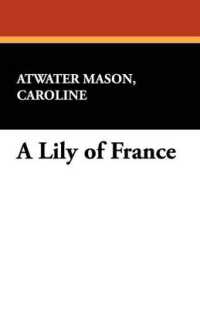Full Description
In Companions in Geography Mario Cams revisits the early 18th century mapping of Qing China, without doubt one of the largest cartographic endeavours of the early modern world. Commonly seen as a Jesuit initiative, the project appears here as the result of a convergence of interests among the French Academy of Sciences, the Jesuit order, and the Kangxi emperor (r. 1661-1722). These connections inspired the gradual integration of European and East Asian scientific practices and led to a period of intense land surveying, executed by large teams of Qing officials and European missionaries. The resulting maps and atlases, all widely circulated across Eurasia, remained the most authoritative cartographic representations of continental East Asia for over a century.
This book is based on Dr. Mario Cams' dissertation, which has been awarded the "2017 DHST Prize for Young Scholars" from the International Union of the History and Philosophy of Science and Technology, Division of History of Science and Technology (IUHPST/DHST).
Contents
Acknowledgements
List of Illustrations
Introduction: Towards a New Cartography of Cross-cultural Circulation
1 Situating the Study
2 Delineation and Approach
3 Cartography and the Jesuit Missions to China
4 Chapter Overview
1 Instruments for the Emperor: New Frontiers, New Practices
1.1 An Instrumental Convergence of Interests
1.1.1 The Académie and the Instrument Market in Paris
1.1.2 The King's Mathematicians' Interest in Cartography
1.1.3 Paris-made Instruments for the French Mission
1.2 Improving Cartographies: An Emperor's Quest
1.2.1 The Kangxi Emperor's Cartographic Aspirations
1.2.2 Qing Statecraft and Cartographic Practice
1.2.3 The Qing Court's Appropriation of Paris-made Instruments
1.3 Frontier Matters: New Qing Cartographic Practice
1.3.1 Integrating the Khalka: Exploring a New Frontier
1.3.2 The 1698 Preliminary Survey
1.3.3 Re-standardizing the Qing's Most Basic Unit of Length
Conclusion
Intermission One: Missionaries or Mapmakers? The Mapping Project and its Place in the Mission
Justifying Missionary Involvement
The Unauthorized Return of Joachim Bouvet
Conclusion
2 Of Instruments and Maps: The Land Surveys in Practice
2.1 Beyond the Passes: Observations and Calculations
2.1.1 New Qing Cartographic Practice along the Great Wall
2.1.2 Revisiting the Manchu Homelands and Northern Frontiers
2.1.3 Strategic Expeditions into Korea and Tibet
2.2 The Logistics in Mapping the Chinese Provinces
2.2.1 Moving South: Sequence, Timing and Strategies
2.2.2 Directed from the Center: The Emperor and His Administration
2.2.3 Team Composition and Local Support
2.3 The Imperial Workshops Connection
2.3.1 Mapmakers from the Inner Palace
2.3.2 European Technical Experts and Assistants
2.3.3 The Logistical Centrality of the Imperial Workshops
Conclusion
Intermission Two: Missionaries and Mapmakers: Missionary Activity during the Land Surveys
The Restitution of Church Buildings
The Impact of the Chinese Rites Controversy
Conclusion
3 The Afterlife of Maps: Circulation, Adaptation, and Negotiation
3.1 The Printed Life of the Overview Maps of Imperial Territories
3.1.1 The Woodblock Editions
3.1.2 The Copperplate Editions
3.1.3 Imperially Commissioned Compilations and Later Renditions
3.2 The European Incorporation of a Qing Atlas
3.2.1 Early Transmissions and Reception in Europe
3.2.2 Contracting Jean-Baptiste Bourguingon d'Anville
3.2.3 Intercultural Adaptation: d'Anville's Regional Maps
3.3 Beijing, Paris and Saint Petersburg: Negotiating the Gaps
3.3.1 d'Anville's General Maps and the Paris-Saint Petersburg Connection
3.3.2 The Saint Petersburg Connection to Beijing
3.3.3 d'Anville's Maps: Reception and Further Adaptations
Conclusion
Annex: Extant Kangxi-era Sheets (Printed)
Conclusion: Unlocking Dichotomies: Revisiting Cross-cultural Circulation
On Qing Imperial Cartography: Traditional vs. Scientific Practice
On the Role of the Individual: Global vs. Local Networks
On Instruments and Maps: The Circulation vs. the Production of Knowledge
On Interculturality: China vs. Europe
References and Bibliography
Index







